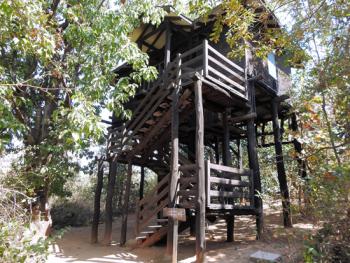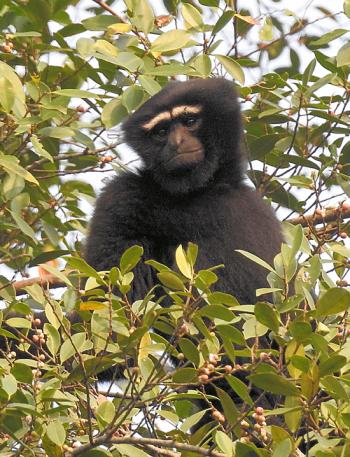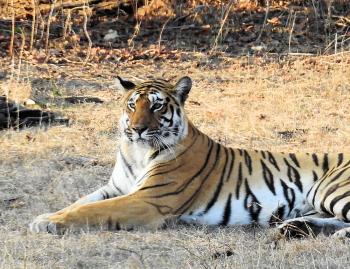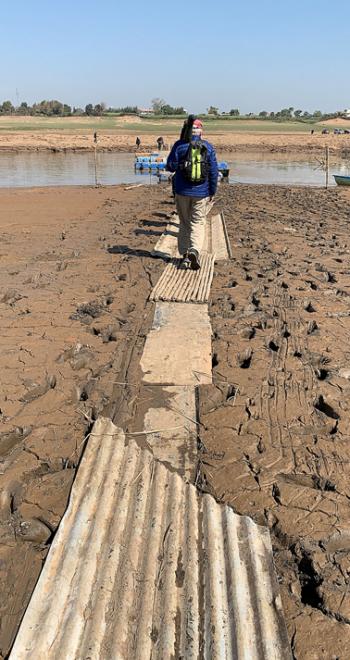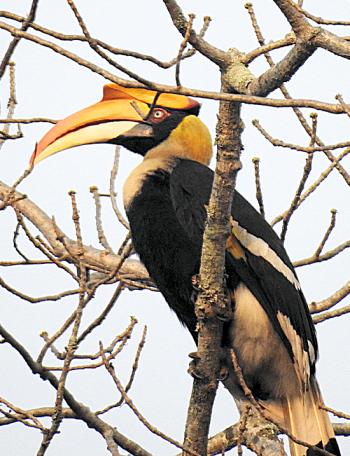A most unique safari in India
This article appears on page 36 of the February 2020 issue.
When most people think of a safari, one of the African countries comes to mind first. However, having visited Botswana, Zimbabwe and Kenya in the past, we decided to try an Indian safari in February ’19, exploring four of the national parks there: Kaziranga, Satpura, Kanha and Pench.
We flew nonstop for 14 hours from Newark to Delhi, spent the night at the Claridges Hotel, then connected with an IndiGo flight to Guwahati, in the state of Assam.
In preparation for our trip, we each obtained an e-visa online at indianvisaonline.gov.in/evisa/tvoa.html (fees start at $10 for a 30-day tourist visa, depending on time of year and length of validity). We also got the recommended vaccination and medications from our local Passport Health office (www.passporthealthusa.com/locations).
Our entire 16-day itinerary was planned by Audley Travel (Boston, MA; 866/583-1354, audleytravel.com) at a cost of $7,453 per person, excluding international airfare. This covered all-inclusive safari lodges, nature tours with guides, all transfers, domestic flights and trains. It did not include the expected gratuities for each driver and ranger.
Kaziranga National Park
Although we spent our first night in Delhi, our adventure really began on the road from Guwahati to Kaziranga. All of our ground transportation had been arranged by Audley through Travel Inn India.
We usually rent a car when we travel and prefer to make our own way from town to town, but the roads in India are far more challenging than those in the other countries we’ve visited, and we were very glad we’d arranged for local drivers and vehicles. This drive of 135 miles, through a maze of elephants, camels, ox carts, cows, mopeds, trucks, pedestrians and all other modes of travel, took almost five hours!
Located on the banks of the Brahmaputra River near the border with Bhutan, Kaziranga is home to the Indian one-horned rhinoceros, Indian elephant, wild water buffalo and Bengal tiger as well as many deer and bird species.
With around 150 square miles of varied terrain, the park has multiple entrances, all with rigidly controlled access.
During our visit, admission began at 7 a.m., when park rangers were available to ride with the vehicles, and the park was closed from 11 a.m. to 3 p.m. All vehicles had to be out of the park by 11 and could only return after 3. This gave the animals a long rest during the heat of the day, but it did restrict game viewing.
Since there are no lodges within the park, it is important to choose one as close to an entrance as possible. Ours was about a 15-minute drive away.
We found the terrain of all the areas of the park to be quite similar and therefore decided it was not necessary to travel to the farthest entrance to visit a more remote area.
We stayed in a riverfront cabin (No. 5) at the Diphlu River Lodge (www.diphluriverlodge.com), which, we were informed, was the accommodation for Princess Kate and Prince William when they visited.
Our 3-night program included all meals and two private game drives per day. Our guide, Bablou, was expert at identifying and spotting birds and mammals and accommodated my interest in photography. In addition to rhinoceros, elephants, water buffalo and all four species of the primates that live there, we saw a total of 200 birds, including three species of hornbills and five species of owls. The very tall elephant grass made viewing tigers difficult, and we did not see one in this park.
The weather was dry and sunny in February, with very few biting insects, but the mornings were quite cold. The guides supplied both hot-water bottles and woolen blankets for the comfort of those of us riding in the back of the excursion vehicle.
Satpura Tiger Reserve
After another long drive, past tea plantations and rice paddies, we returned to the Guwahati airport.
The security in India is very strict, and no one is allowed into the airport terminal without a ticket. Although we were told that our guide would help us negotiate the baggage and ticket counters, he had to remain outside the terminal.
Indian currency is not available outside of the country, so we obtained cash from the ATMs in the airports.
We flew back to Delhi on Jet Airways and continued on to Bhopal by train. Our accommodation in Executive Class was very comfortable, with many meals and snacks supplied.
In Bhopal, we were met by a private driver for the trip to Satpura, a 111-mile journey that took four hours.
Satpura is one of the least-known parks we visited, located in the state of Madhya Pradesh about 550 miles due south of Delhi. We stayed in a cabin at the Reni Pani Jungle Lodge (www.jehannuma.com/reni-pani-jungle-lodge), located outside the park.
Each morning we drove to the banks of the Tawa Reservoir, which, at that time of year, was mostly dry. A footpath constructed of hay and tin roofing allowed us to walk across the mud to a pontoon bridge. Once across, we climbed aboard jeeps for our safari into the park.
The terrain of the park, which covers over 200 square miles, is extremely rugged, consisting of sandstone peaks, narrow gorges and densely forested hills. It supports many different mammals, including sambar, chital, nilgai and gaur, and birds.
Our guide, Siddarth Biniwale, who had been named the TOFTigers Lodge Naturalist of the Year for 2018, showed us a female sloth bear with her cub on our first game drive. Each night in the lodge library, he gave a presentation on birds or animals, and during one day he spotted a Malabar giant squirrel and Alexandrine parakeet.
This was our favorite lodge, with wonderful food served family style, accommodating staff and very comfortable quarters.
Kanha National Park
After a hearty breakfast, our driver took us to Pipariya, from which we took an AC Class train to Jabalpur. Unlike the Executive Class train, this one had no food, no signs in English, cramped seats and poor toilet facilities. Fortunately, the ride was only about two hours long, after which a 4-hour drive took us to Kanha National Park.
Established in 1973 as one of the first tiger reserves under Project Tiger, Kanha is a well-known and very popular reserve that covers an area of almost 800 square miles. Almost fully ecologically restored and now regarded as one of the finest tiger landscapes in the country, this park is also home to the endangered hard-ground barasingha (aka swamp deer) and 10 other ungulate species.
This excellent ecotourist destination is very well policed by rangers, who enforce strict rules for visiting and viewing the animals. There was no litter to be seen inside the park, all roads were well maintained, and every vehicle was accompanied by an armed ranger.
We saw our first tiger in this park, T65. She is a beautiful female who was radio-collared in 2014 for a brief period as a subadult for research purposes. She has had two litters.
We only saw her for a short time (disappointing) because the park was about to close. In fact, we had to submit a written excuse for coming out of the park 15 minutes late! However, there were other chances to see the beautiful Bengal tiger as well as many other animals and birds, including the oriental scops owl.
We stayed at Chitvan Lodge (chitvan.com) in a Jal Suite, which was quite comfortable and located a short distance from the dining hall. There was no common cocktail lounge, but it did have a nice pool and a small library.
The lodge is located inside the park and a very short distance from Mukki Gate. Unofficially the most popular zone of all due to favorable tiger and wildlife sightings, Mukki Zone is used mostly by visitors staying on that side of the park, and it proved to be an ideal zone to look for tigers, hard-ground swamp deer, Indian bison, wild dogs and leopards.
Pench National Park
After a morning jeep safari in Kanha, our driver took us on another road adventure, traveling five hours to Pench National Park. Named for the Pench River, it was declared India’s 19th tiger reserve in 1992.
The landscape, which straddles the border of Maharashtra and Madhya Pradesh states, is predominately mixed deciduous forests of teak and bamboo.
We stayed in the Pench Tree Lodge (penchtreelodge.com) in a cabin built 18 feet in the air. The lodge has a very comfortable lounge and swimming pool, and the food was delicious. Our guide, Hemoni, although relatively new to birding, was very enthusiastic and accommodating.
As was true of most of the lodges, Pench was located a distance from the park entrance, necessitating a 30-minute drive four times a day to visit. However, we did see several tigers, many deer species, mongooses, jackals and, of course, a variety of birds, including a steppe eagle.
Our final transfer by private vehicle was to Nagpur, from which we flew to Delhi on Jet Airways.
While there are many beautiful and interesting forts, temples and mosques to visit, a visit to India would not be complete without seeing the Taj Mahal, so we stayed one night at The Coral Court (coralcourthomestay.com), a boutique homestay in Agra just a short walk from the Taj. The bedrooms were quite small, but this was a very comfortable place with good meals and welcoming hosts.
We were concerned that the Taj Mahal would not be as beautiful as we had hoped because of the mud packing that was being done to “clean” the façade, but all signs of renovation or cleaning were gone and only the glorious building was visible. This extra excursion exceeded our expectations and definitely should not be missed on any trip to India.

